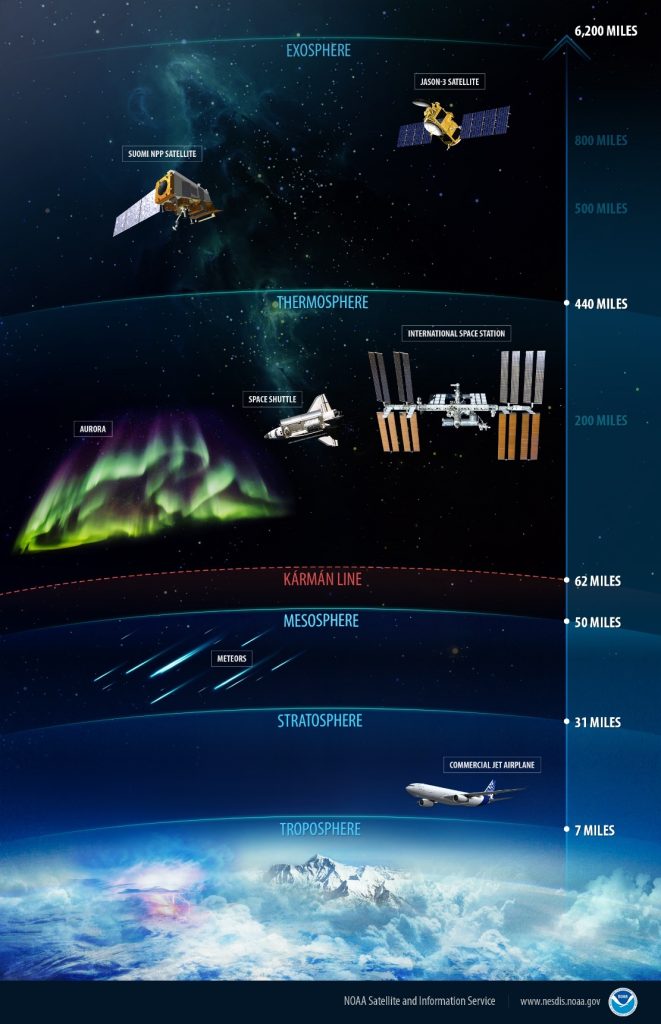1.7 Layers of the Atmosphere
The atmosphere has five distinct layers defined primarily by their temperature. These layers, starting with the lowest, are called the (1) troposphere, (2) stratosphere, (3) mesosphere, (4) thermosphere, and (5) exosphere.
The troposphere extends from Earth’s surface about 12 kilometers (7.5 miles) in height. Yet this very shallow layer is tasked with holding all the air needed for plants and animals, and contains about 99 percent of all water vapor. In the troposphere, temperatures typically go down as altitude increases, since most of the heat found in the troposphere is generated by the transfer of energy from Earth’s surface. The troposphere is the densest atmospheric layer, containing about 85% of the atmosphere’s mass. Most of Earth’s weather happens in the troposphere, and this course focuses on the troposphere.
The stratosphere is located between approximately 12 and 50 kilometers (7.5 and 31 miles) above Earth’s surface. This layer is perhaps best known as the home of Earth’s ozone layer, which protects the Earth from the Sun’s harmful ultraviolet radiation. Because of the heat generated by ozone interacting with UV radiation, temperatures increase with altitude in the stratosphere. The stratosphere is nearly cloud- and weather-free. It is also the highest part of the atmosphere that jet planes can reach.
The mesosphere is located between about 50 and 80 kilometers (31 and 50 miles) above Earth’s surface, the mesosphere gets progressively colder with altitude. In fact, the top of this layer is the coldest place found within the Earth system, with an average temperature of about -85°C (-120°F). Most meteors burn up in this layer. Rocket-powered aircraft can reach the mesosphere.

The thermosphere is located between about 80 and 700 kilometers (50 and 440 miles) above Earth’s surface. The lower portion of the thermosphere contains what is called an ionosphere. The ionosphere can capture sub-atomic particles from the Sun to create an aurora. In this layer, temperatures increase with altitude due to the very low density of molecules found here. It is both cloud- and water vapor-free. The International Space Station orbits in the thermosphere.
The exosphere is located between about 700 and 10,000 kilometers (440 and 6,200 miles) above Earth’s surface. The exosphere is the highest layer of Earth’s atmosphere and merges with the solar wind at its top. The solar wind consists of subatomic particles emitted by the Sun. Molecules found here are of extremely low density and can escape to space. The aurora borealis and aurora australis are sometimes seen in its lowest part. Most Earth satellites orbit in the exosphere. Many times when studying the atmosphere, the exosphere is omitted and is just considered as space outside the planet.
Layers and Their Temperature Profiles

This diagram illustrates the four lowest layers and their temperature profiles. Notice temperatures cool as altitude increases in the troposphere and mesosphere, while temperatures warm with altitude in the stratosphere and thermosphere. Each layer is separated by what is called a “pause” where the greatest change in thermal characteristics occurs.

